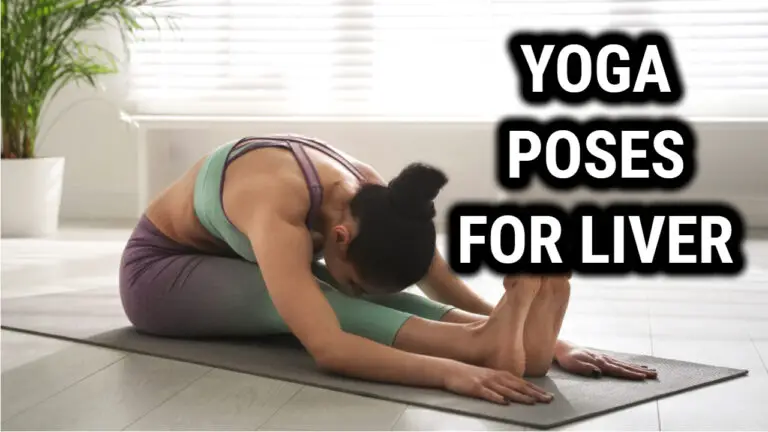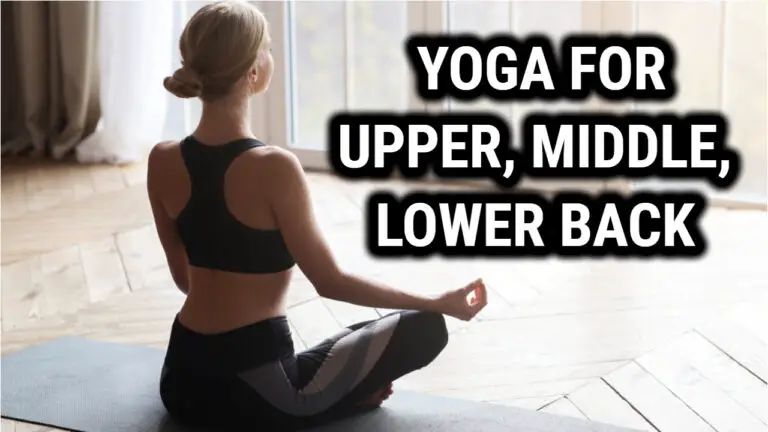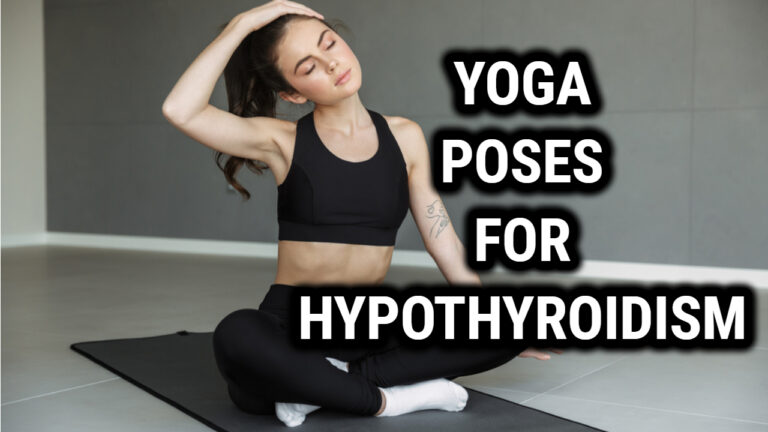Why You Need a Yoga Mat: Benefits and Uses Explained

Yoga mats are an essential tool for anyone who practices yoga. They provide the cushioning, support, and grip needed to do yoga poses correctly and safely.
But many people wonder: what is the point of having a yoga mat? This article explores the benefits of using a yoga mat during your practice, as well as how to choose the right one for you.
Yoga mats come in all shapes and sizes, with different thicknesses and textures. Some are even designed specifically for certain types of yoga. With so much variety, it can be overwhelming trying to find the perfect mat for your needs.
But understanding why having a good quality mat is important can help make the decision easier. Read on to learn more about why having a yoga mat matters and how to choose one that’s right for you!
Comfort And Safety
A yoga mat provides comfort and safety for yogis of all levels. With its cushioning and non-slip surface, a quality yoga mat can make your practice much more enjoyable.
Its cushioning helps to relieve pressure points, particularly on your knees and back, and provide support when transitioning between poses.
A good quality yoga mat is designed to absorb sweat and dries quickly so you can keep practicing without worry of slipping or sliding during class.
On top of all these benefits, having a dedicated yoga mat also helps create healthy habits by establishing a physical space specifically for practice – be it at home or in the studio – which encourages mindfulness and dedication to one’s practice.
So don’t let sweaty palms or harder surfaces stop you from achieving your goals; invest in a quality yoga mat today!
Improving Focus And Motivation
Using a yoga mat can provide much-needed comfort and safety during a yoga practice. Not having to worry about slipping, sliding, or being distracted by an uncomfortable surface allows you to focus on the poses and your breathing.
Beyond physical safety and comfort, however, having a yoga mat can also have psychological benefits. Having your own personal space for practice is essential for feeling grounded and secure in your practice.
A yoga mat provides a designated spot just for you to stand, sit, or lay down without distraction from anything else that’s going on around you.
This can help to create a sense of motivation while allowing you to connect with yourself more deeply. Having your own personal mat also helps signal to yourself that it is time to focus.
It serves as a mental cue that it is now time to be present and take care of yourself through intentional movement, deep breathing, and meditation.
When used regularly this type of self-care can have profound effects on both mental and physical health.
Different Types Of Yoga Mats
At first glance, a yoga mat may seem like an unnecessary item, something that you could easily do without. But it’s actually one of the most important pieces of equipment for those who practice yoga regularly.
There are many different types of yoga mats available, each with their own unique features. Here’s a quick rundown:
- Textured mats – These provide extra grip and traction so that you can stay in place during poses.
- Lightweight mats – Perfect for traveling yogis as they can be rolled up and carried around easily.
- Eco-friendly mats – Made from biodegradable materials such as natural rubber or jute, these are great for those who want to reduce their environmental impact while doing their practice.
No matter what type of yoga mat you choose, it will be an invaluable part of your yoga practice. With the right mat, you’ll be able to have a more enjoyable experience while getting the most out of every pose.
Choosing The Right Yoga Mat
Choosing the right yoga mat is an important decision. It should be comfortable, durable, and conducive to your practice. The material of the mat can affect how stable you feel during poses and how easily it can be cleaned.
Many mats are made from foam or rubber, with different levels of cushioning and grip. If you’re a beginner, you may want to look for mats that provide extra cushioning for comfort and stability.
For more experienced practitioners, thinner mats may offer better balance and control.
The size of the mat is also important to consider. Standard yoga mats measure 72 inches long by 24 inches wide, but if you’re taller than average or prefer a wider surface area for certain poses, it’s worth investing in a longer or wider mat.
You may also want to look at extra-thick options if you have sensitive joints or need extra support when practicing on a hard floor surface.
No matter your practice style or level of experience, having the right yoga mat can help ensure that every session is as comfortable and enjoyable as possible. With the right mat in hand, you’ll be ready to take on any pose with ease.
Taking Care Of Your Yoga Mat
A yoga mat is an essential tool for practicing yoga. Not only does it provide a comfortable surface to practice on, but it also helps you maintain your balance and alignment during poses.
To get the most out of your yoga mat, it’s important to take care of it properly.
Here are some tips to keep your yoga mat in top condition:
- Clean your mat regularly with a mild soap and warm water solution.
- Avoid using oils or lotions on your mat as they can make it slippery and less effective.
- Store your mat in a cool, dry place away from direct sunlight or other sources of heat and humidity.
- Roll up your yoga mat after use to prevent dust build-up and extend its life span.
By following these simple steps, you’ll ensure that you have a reliable and safe surface to practice on each time you unroll your mat!
Frequently Asked Questions
What Are The Health Benefits Of Practicing Yoga With A Yoga Mat?
Practicing yoga with a yoga mat has many health benefits.
The use of a yoga mat provides cushioning and support for the body, helping to protect your joints and muscles from strain.
It also creates a non-slip surface, allowing you to move freely without worrying about slipping or sliding.
Additionally, the texture of the mat allows you to feel grounded while making it easier to stay in proper alignment during your practice.
Finally, using a yoga mat can help reduce stress by providing a sense of stability and comfort during challenging poses.
All these benefits make it clear why having a yoga mat is essential for any yogi.
How Often Should I Replace My Yoga Mat?
Yoga mats are an important part of any yoga practice, as they provide cushioning and stability for your body. However, over time, your mat may become worn out through use or exposure to the elements.
Generally speaking, it’s a good idea to replace your yoga mat every 6-12 months in order to maximize comfort and safety while practicing. If you use your mat often or if you store it outside, you may need to replace it more frequently.
Additionally, if you notice signs of wear and tear such as holes or cracks in your mat, then it may be time for a new one.
Can I Use A Yoga Mat Outdoors?
Did you know that 87% of yoga practitioners are now practicing outdoors?
If you’re interested in taking your practice outside, you may be wondering if a yoga mat is necessary.
The answer is yes! A yoga mat is important for providing extra cushion and grip when doing poses outdoors. Not only will it help keep you comfortable while practicing, but it can also prevent slippage on uneven surfaces.
Plus, there are special outdoor-friendly yoga mats available that are designed to withstand rain and other elements.
So don’t forget to take your mat along for an enjoyable outdoor yoga session!
How Do I Know If A Yoga Mat Is Right For My Body Type?
When choosing a yoga mat, it’s important to consider your body type and practice.
If you’re taller and heavier, opt for a thicker mat with more cushioning to support your joints.
For those who are petite or lighter in weight, a thin mat may be just right.
To find out what’s right for you, try out different mats in the store or ask an experienced instructor for advice.
What Is The Best Material For A Yoga Mat?
The best material for a yoga mat varies depending on personal preference, but generally speaking, the most popular materials are cork, natural rubber, and PVC.
As the old adage goes: ‘The right tool for the right job’, so it is important to pick a material that will work best for your individual needs.
Cork mats are lightweight and durable, offering superior grip in a lightweight design; natural rubber mats provide cushioning and support and are great for those with joint sensitivity; and PVC mats are economical yet durable, offering great traction and grip.
Conclusion
Yoga mats provide a variety of benefits for our physical and mental health. They give us stability and cushioning during our practice, allowing us to gain better control and alignment.
Replacing your mat every 6-12 months helps make sure you’re getting the most out of it. Whether you’re practicing indoors or outdoors, having a yoga mat is essential for any yogi looking to reap the full rewards of their practice.
Like a faithful companion, a good quality yoga mat will be there with you each step of the way on your yoga journey. So don’t wait, go get yourself one – it’ll be worth it!
Yoga mats are an essential tool for anyone who practices yoga. They provide the cushioning, support, and grip needed to do yoga poses correctly and safely.





